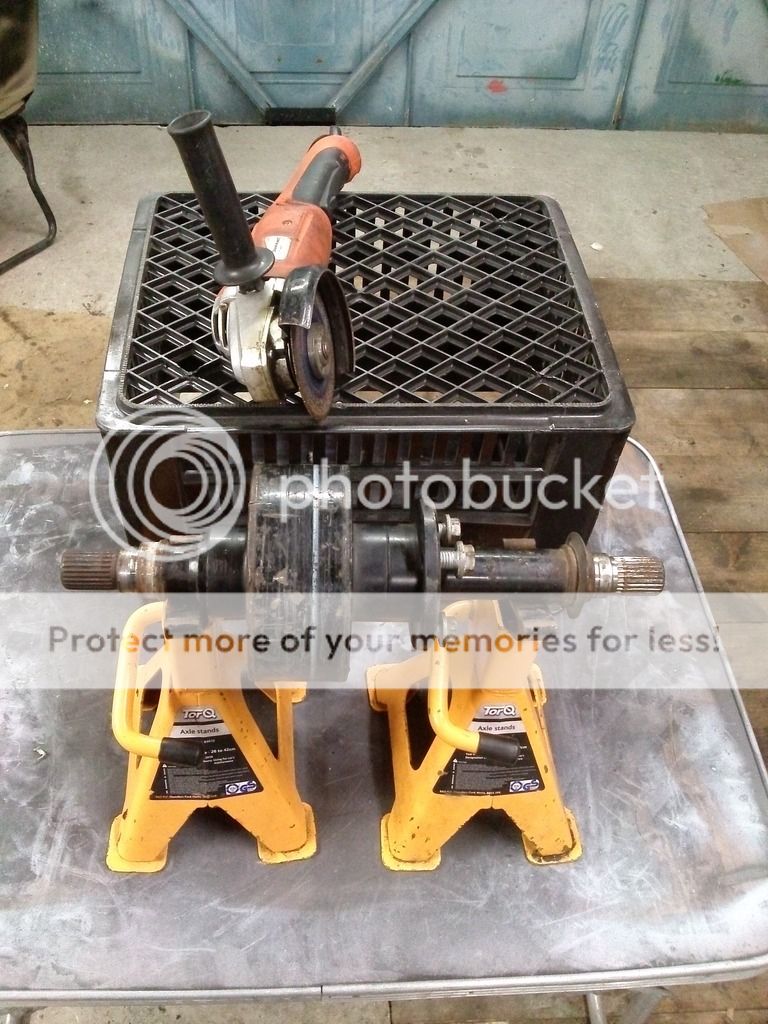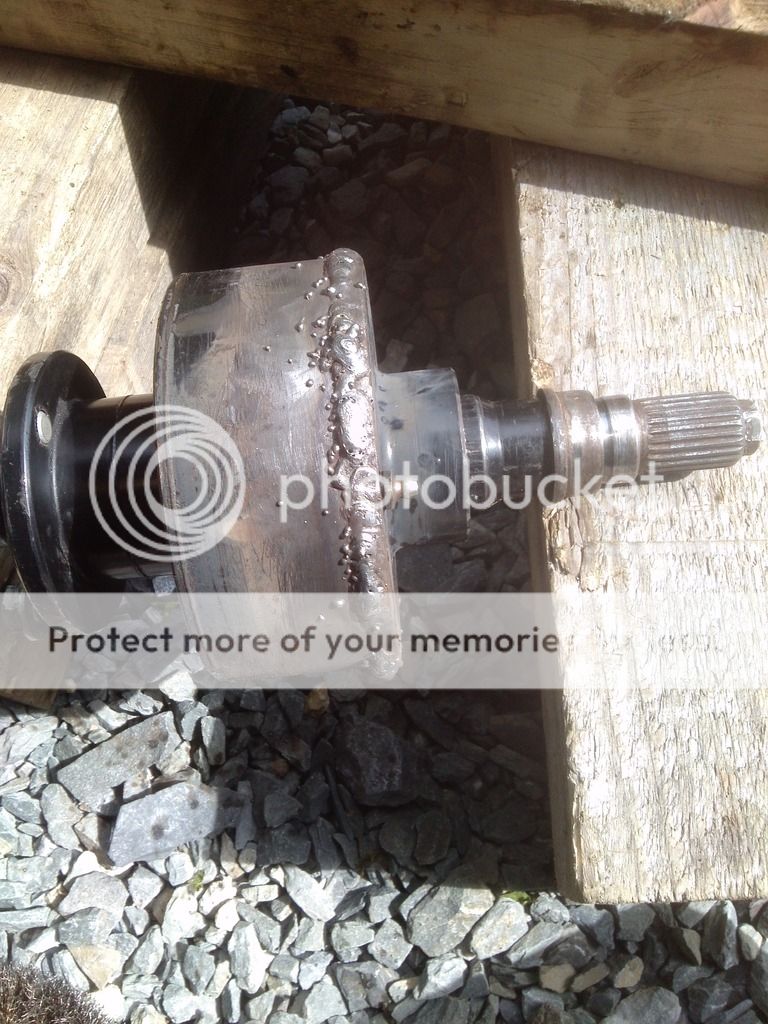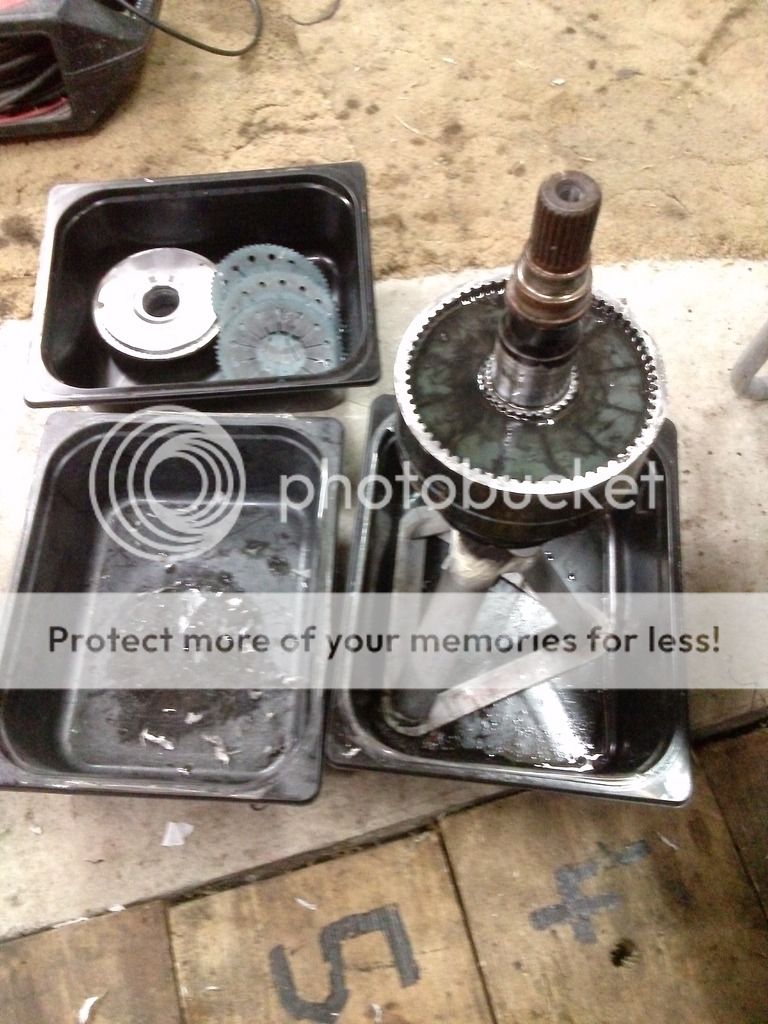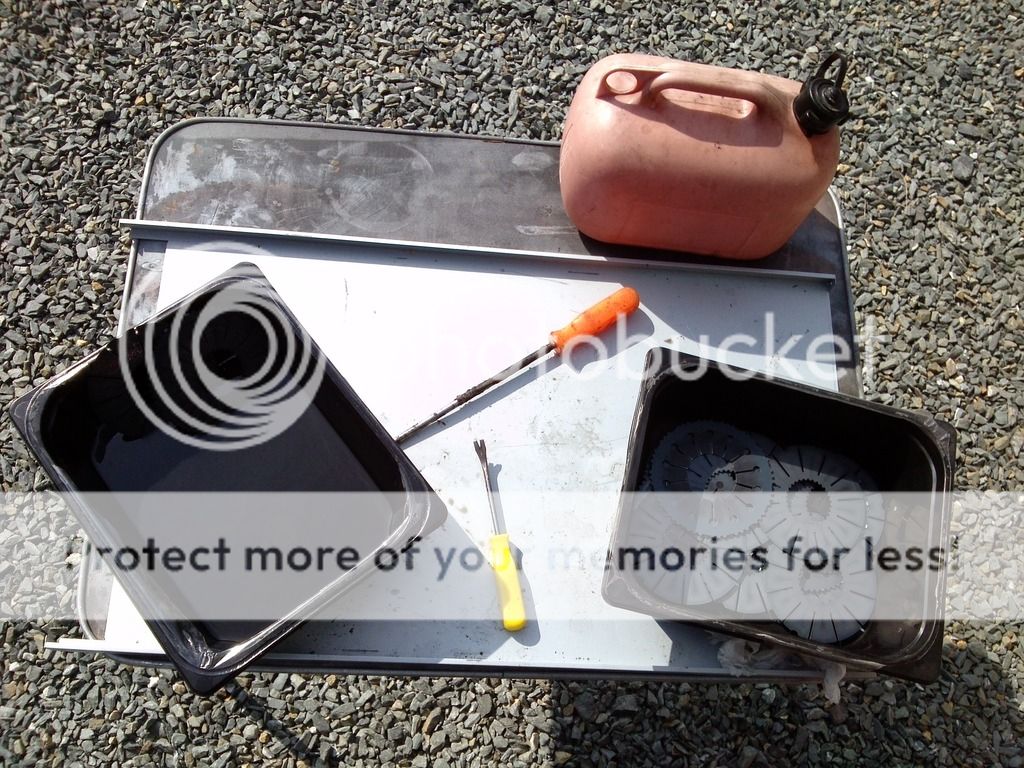Hippo
Lord Hippo
- Posts
- 51,809
We do know how/why the vcu works. Look up the sheering effect.
read this > http://www.landyzone.co.uk/lz/3080984-post22.html
read this > http://www.landyzone.co.uk/lz/3080984-post22.html
Well I did a series of one wheel up tests, five essentially when cold, I had driven about 2km and none over 50kmh and it had sat for about 45 minutes. I did another five after driving the course I did yesterday 19km or so.
Weather, high overcast, some light rain showers, very little wind and about 12ºC.
I used a 1255mm piece of square aluminium tube as my bar, a 32mm socket, my 1/2" ratchet drive and 3 plastic bottles with just under 8L of water. I put a screw in at the 1200mm point to hang the bottles on.
Timed from the 45º mark to horizontal rest [90º]
FL1 K series 1.8 190,000km, original VCU. All transmission oils have now been replaced. This FL has had a s/h IRD fitted at some point in the past.
Results - COLD
#1 - 2.00
#1 - 2.02
#2 - 2.08
#3 - 2.09
#4 - 2.00
Averages out at 2.03 rounded.
Results - Warm
#1 - 1.29
#2 - 1.35
#3 - 1.41
#4 - 1.46
#5 - 1.51
Averages out at 1.40.
Interesting in the second set of tests the time got longer as the VCU cooled.
Apologies for posting again. I've made a thread of this already should have plonked it here.
I now have a question for those who have opened up a VCU. When the 'cap' is removed [ input end] and the plates are removed and the internal cavity cleaned up, is there a bearing or some sort or seal that runs on the input shaft in that cap. At the other end is there again some sort of bearing that the input shaft seats into and runs in? If there is, are they identifiable and thus able to be sourced from suppliers?




Just did the wheel up test on my recently acquired Freelander. I have no information on the VCUs history but it says GKN on it - it looks fairly fresh (no rust anywhere) - this on a 05 plate TD4 Auto with 126k miles on it.
Ambient 22degrees - car stood overnight - 1.2m alloy tube onto the 35mm socket - 8kg weight.
First run 18secs for 45 to horizontal
Ran 5 more and it gradually worked down to 12secs
Went for a 2 mile run - checked VCU - still at 23degrees
Repeated test 5 times - went from 15secs down to 11secs
Repeated 5 times with a 5kg weight - went from 30secs to 28secs
Drove 16 miles and stopped on a layby to check VCU temp - it was only very slightly warm and cooler than the props (forgot my infrared thermometer)
So - I think I should be happy with that - it's a little free-er than Hippo's test of this thread Sept 18th 2012 - and also HTR's test report on Jun 27th 2015 on a brand new setup which tested almost identical to Hippo's but at a lower ambient (9degrees)
Car feels quite free on lock forwards or back - but with Auto not so easy to judge - and went up a steep grassy slope I know without any trauma - bit of scrabbling at the front but went straight up.
Just my tuppence worth (in support of Hippo's call for data)
The life time of a product isn't necessarily the amount of time it's use for, or lasts for, or is owned for. Some car manufacturers quote this to be 7 or 10 years. Hence the sealed for life aspect doesn't really apply to us as our vehicles last longer. In general, vcu's are designed with a secrete fluid mix (re-conners don't know the exact spec, they have guessed) and this performs well in normal use on and oft road. After a period of use the fluid changes from the original spec, which causes the vcu to stiffen. When this happens it puts additional stress in the transmission, which may break something. Hence why we test our vcu's to see if they have stiffened and if so, replace them. The 70k miles thing became a popular interval on LZ, but not other forums. theory being to just change it as it's cheaper than the costs of something breaking. Not the perfect solution as vcu's can fail at a lower mileage than this too. There's plenty of discussion on this subject and re-conners are more than happy to quote 70k miles being a fact, backed up by their self imposed expert status. The fact is they have a vested interest as they make money out of vcu's. The best thing to do is test yer vcu. If in doubt remove it (and don't forget to tell yer insurance).I have been reading through the thread with interest having purchased a freelander recently. I have also had a look at the GKN website who I believe are the manufacturers of the VCU fitted to the Freelander.On their site they say that the VCU is a system sealed for life requiring no maintenance. Then it says that the Silicone fluid is optimised with specific additives for lifetime performance. Now correct me if I'm wrong but if it's a lifetime performance, and the suggestion is they need replacing at around 70000 miles to prevent any damage to other drive parts,which for the average driver is about every 7 years,taking into account the average person is supposed to do about 10000 miles a year. How is the fluid optimised for life? May be GKN need to address the problem or refrase their technical features. Just a thought!
Welcome To LandyZone, the Land Rover Forums!
Here at LandyZone we have plenty of very knowledgable members so if you have any questions about your Land Rover or just want to connect with other Landy owners, you're in the right place.
Registering is free and easy just click here, we hope to see you on the forums soon!
